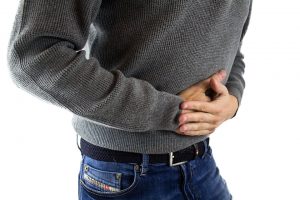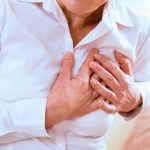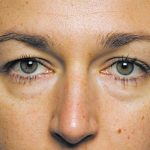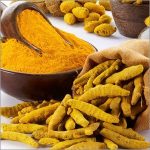 Gallstone disease, from year to year, is becoming an increasingly common disease of many people around the world. The number of women who have the gallstone disease in comparison with men, is usually from 2: 1 to 8: 1. The older the person is, the higher the risk of manifestation of the disease is. If we talk about the total number of patients with the gallstone disease – 10% of the world population, after the age of 70, the number of patients is up to 30%.
Gallstone disease, from year to year, is becoming an increasingly common disease of many people around the world. The number of women who have the gallstone disease in comparison with men, is usually from 2: 1 to 8: 1. The older the person is, the higher the risk of manifestation of the disease is. If we talk about the total number of patients with the gallstone disease – 10% of the world population, after the age of 70, the number of patients is up to 30%.
If we talk about the geography of the spread of the disease, the number of cases is greatest in the developed countries – the USA, Europe, the CIS countries, while food is consumed mainly by products of vegetable origin – Southeast Asia, India, Japan, cases of cholelithiasis are rare. Of course, in addition to food, the active lifestyle plays a big role, too. Learn more about this problem in order to prevent its appearance or to treat it effectively if you have been diagnosed the gallstone disease.
Contents
Step number 1: Learn about the Gallstone Disease Development
 Gallstone disease (SCI) is a disease characterized by the formation of calculi (concretions) in the gallbladder or bile ducts. Another name for the disease is cholelithiasis. Before we understand the process of formation of stones in the gallbladder and its ducts, we will try in a simple language to describe what kind of organs they are and what function they perform in the vital activity of the organism.
Gallstone disease (SCI) is a disease characterized by the formation of calculi (concretions) in the gallbladder or bile ducts. Another name for the disease is cholelithiasis. Before we understand the process of formation of stones in the gallbladder and its ducts, we will try in a simple language to describe what kind of organs they are and what function they perform in the vital activity of the organism.
The gall bladder is an organ, a sort of reservoir for bile, connected to the liver, pancreas and duodenum. In the gall bladder there is separation of bile particles from water, i.e. in this body there is a concentration of bile, which when ingesting food, especially heavy food, the gallbladder throws into the initial department of the small intestine (12-colon), where this secret contributes to the digestion of food. Bile ducts are the ducts through which the liver, gall bladder, pancreas and duodenum are connected.
Bile is a secret secret produced by the liver, which through the hepatic duct enters the gallbladder, where, as we have already said, its concentration (separation from water) occurs. Bile is necessary for normal digestion of food.
Now let us begin to consider the development of cholelithiasis:
- Gallstones are seals, ranging in size from several millimeters to several centimeters, formed mainly from cholesterol deposits, calcium salts, various pigments (bilirubin – bile pigment), proteins and other substances. Stones, or as they are called in the scientific world – concrements, can be of various shapes, sizes, and also based on different particles, with the predominance of a substance. According to the structure, the concretes can be crystalline, laminated, fibrous or amorphous.
- The next stage of development of the CSF depends on the localization of the obstruction of the duct. If this occurs before the main bile duct, ie. immediately after the gallbladder, bile from the liver enters immediately into the small intestine, but a lack of its concentration leads to poor digestion of food. In addition, bile acids begin to circulate in the body without a controlling organ (bubble), which leads to the fact that an aggressive secret begins to harm the body, because it is the bubble that regulates when bile is needed in the intestine, and when not.
- If the stone clogs the lumen of the common bile duct, then bile, only already concentrated, from an overabundance returns back to the liver, and begins to amaze it. This leads to toxic hepatitis. If the stone clogs the lumen of the common duct in the very duodenum, then the pancreas gets into the affected area.
- With all these blockages you need to understand that bile cannot get into the small intestine, and food cannot be digested normally.
Important: Bile begins to poison the body, sometimes there are infectious microorganisms, which contributes to the development of life-threatening consequences.
Step number 2: Learn What May Cause the Gallstone Disease
 Among the main causes of the formation of stones in the gallbladder and bile ducts are:
Among the main causes of the formation of stones in the gallbladder and bile ducts are:
- Congestion of bile in the gallbladder;
- Ultra-high bile concentration;
- Violation of metabolic processes in the body, in particular bilirubin, cholesterol, lipids (fats, phospholipids, etc.) and other substances that often provoke such diseases as – fermentopathies, diabetes mellitus, anemia (anemia), metabolic syndrome and others;
- Dyskinesia of the biliary tract;
- Hepatitis, turning into cirrhosis of the liver;
- Hypofunction of liver cells;
- Diseases of the pancreas and other organs of the digestive tract;
- Hemolytic anemia;
- Congenital anomalies in the structure of the organs of the gastrointestinal tract;
- The presence in the bile ducts of scars, tumors, adhesions, kinks, inflammatory and other pathological changes, and processes;
- The presence of infection in the body, especially the E. coli.
Factors that increase the risk of developing CLD (cholelithiasis):
- Malnutrition – fasting, overeating or long intervals between meals;
- Use of harmful, spicy, fatty, fried and spicy food;
- Sedentary lifestyle;
- Excess weight, obesity;
- Certain medications: hormonal contraceptives, estrogens, fibrates, etc.
- Allergic reactions;
- Pregnancy, especially multiple;
- Female sex – in women the number of cases with CSF is several times higher than that of men;
- Age (especially after 70 years) – the older the person, the greater the likelihood of the appearance of stones is;
- Heredity
Important: There are factors that can’t be controled like heredity but there are certain causes, which you can influence. Think which of them you can control to prevent the development of the disease. Also, consider getting first aid training at MyCPR NOW for better preparedness in emergencies.
Step number 3: Check whether You Have Any Symptoms of the Cholelithiasis
 The process of development of cholelithiasis takes a long time – from the beginning of the formation of stones to the first signs of the disease can take 5 to 10 years. This is due to the fact that the presence of stones in the gallbladder does not disturb the person, and the pains appear only when they get into the biliary tract and begin to injure
The process of development of cholelithiasis takes a long time – from the beginning of the formation of stones to the first signs of the disease can take 5 to 10 years. This is due to the fact that the presence of stones in the gallbladder does not disturb the person, and the pains appear only when they get into the biliary tract and begin to injure
The first signs of cholelithiasis:
- Yellowing of the skin, sclera of the eyes, mucous membranes of the oral cavity;
- Sharp colic in the right upper quadrant (biliary colic), which are manifested when the stone moves along the biliary tract;
- Feeling of heaviness in the abdomen, nausea, frequent eructations;
- A sense of bitterness in the mouth;
- General weakness and malaise.
Additional symptoms:
- Elevated body temperature – up to 37-38.5 ° C;
- Increased sweating;
- Discoloration of feces;
- Dull pain in the liver, developing after the expansion of the bile ducts of this organ, which leads to an increase in the liver volume;
- Convulsions.
Symptomatology can vary depending on the location of occlusion of the bile duct stones, as well as the concomitant diseases.
Important: If you have checked the list of symptoms and found at least one of the main symptoms, you should see a doctor immediately.
Step number 4: Check the Classification and the Stages of the Gallstone Disease
 By the localization, there are the following types of the disease:
By the localization, there are the following types of the disease:
- Cholecystolithiasis – stones are formed in the gallbladder;
- Choledocholithiasis – stones are formed in the bile ducts.
By the composition of stones:
- Cholesterol stones – consist mainly of cholesterol deposits, and partly of salts, bilirubin (bile pigment), various minerals, protein and other substances. Painted in yellow shades. Cholesterol concrements are found in 80% of all cases of cholelithiasis.
- Pigment (bilirubin) stones – consist mainly of bilirubin, calcium salts and partially cholesterol deposits. Painted in dark brown or black. The formation of pigmentary stones is usually promoted by impaired liver function, infectious diseases of the bile duct and frequent hemolysis.
- Calcareous stones. The main part of the concrements consists of impurities of calcareous salts.
- Mixed stones. The most popular type of stones, which consist of all of the above substances.
Stages of Cholelithiasis:
- The 1st stage (initial, physico-chemical or proof stage, primary stones). Characterized by structural changes in the composition of bile, as well as the absence of clinical manifestations (symptoms) of the disease. Identify violations can only be using biochemical analysis of bile.
- The 2d stage (formation of stones, latent stone-bearing). Characterized by the lack of clinical manifestations, only occasionally there may be some discomfort in the abdomen. You can detect the presence of stones with the help of instrumental diagnostics (ultrasound, x-ray).
- The 3d stage (secondary stones). Characterized by the presence of symptoms of CSF, can be accompanied by the development of cholecystitis.
- The 4 th stage. It is characterized by a number of complications caused by cholelithiasis.
Important: If you identify the beginning of the first stage of the disease, you will have great chances to treat it quickly.
Step 5: Consult the Gastroenterologist about the Treatment Methods
 If you have noticed at least one symptom of the disease, or you know that your relatives had this health problem and you worry about the heredity, then you should consult the medical specialist who will provide the examination.
If you have noticed at least one symptom of the disease, or you know that your relatives had this health problem and you worry about the heredity, then you should consult the medical specialist who will provide the examination.
The diagnosis of cholelithiasis includes the following survey methods:
- Anamnesis;
- Ultrasound examination of the abdominal cavity;
- Oral cholecystography;
- Retrograde cholangiopancreatography;
- Computed tomography (CT);
- Magnetic resonance imaging (MRI);
- Radiography;
- General blood analysis;
- Blood chemistry;
- Biochemical analysis of bile;
- Scintigraphy of the biliary system.
The treatment of cholelithiasis is aimed at removing stones from the body, as well as the normalization of the functioning of all organs and their appendages involved in the production, passage and excretion of bile.
Treatment of cholelithiasis usually involves the following methods.
1. Removal of gallstones and removing them from the body
- Medicinal method: Removing gallstones with drugs means using drugs that normalize the composition of bile and metabolism, which leads to a gradual splitting of the stones. Assigned mainly in the presence of small concrements, or after the ultrasound method of their rem;
- Ultrasonic method: Ultrasonic method of removal of gallstones is performed with the help of special ultrasonic medical equipment, which, by means of a wave action on the gallstone, breaks it into smaller particles;
- Laser method: The laser method of removing gallstones is performed with the help of special laser medical equipment. Importantly, medical device registration safeguards both patients and healthcare providers by ensuring that only high-quality, safe, and effective devices are utilised. This not only optimises patient care but also reduces potential legal complications for healthcare institutions. This informative guide provided by Andaman Medical offers a step-by-step overview of the process. The essence of the method consists in the implementation of a small puncture in the human body, through which, directly to the stone itself, a special laser is directed, destroying the calculus into smaller particles;
- Remote shock wave lithotripsy (DUPLT): It is carried out with the help of powerful electrical discharges caused by an electromagnetic generator. The equipment generates pulsed discharges of high and low density, alternating one after the other, which, upon action on the calculus, destroys its structures, after which the stone decays;
- Surgical method (operation): Open cholecystectomy is the most popular and cheap method of removing gallstones. Indications for an open surgery is the presence in the gallbladder and its ducts of large stones, frequent severe pain and the development of complications of cholelithiasis.
2. Diet
Diet in cholelithiasis is usually prescribed after removal of gallstones. This is due to the fact that even without the presence of the gallbladder, the calculi can re-form, but already in the biliary tract. The diet is aimed at preventing the repeated development of CSW. You can eat low-fat varieties of meat and fish, cereals (rice, oatmeal, buckwheat skim milk products (milk, sour cream, kefir, cottage cheese), eggs (1 per day), bread, olive oil, any vegetables and fruits (except, sour), tea, soft coffee with milk, compotes, juices.
3. Natural remedies
Before using natural remedies, be sure to consult your doctor.Keep in mind that such remedies are aimed at removing stones, so that their movement along the bile ducts to exit the body can be accompanied by colic, nausea and pain.
Important: It is recommended to choose the most suitable method of treatment taking into account the pros and cons of each one for you individually.
10 Tips How to Prevent Cholelithiasis (Gallstone Disease)
- Try to eat mainly natural food (vegetable origin), which is enriched with vitamins and trace elements;
- Avoid or minimize the use of unhelpful and harmful food;
- Move more, do morning exercises;
- Do not neglect any diseases, especially the gastrointestinal tract, so that they do not become chronic;
- Do not allow the presence of extra pounds of body weight, avoid obesity;
- Refuse to drink alcoholic beverages;
- Try not to take medication without consulting your doctor;
- Observe the rules of personal hygiene;
- Observe the work / rest / healthy sleep;
- Avoid stress.





